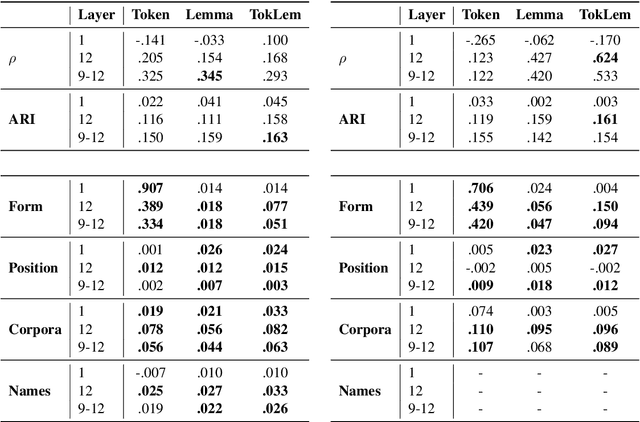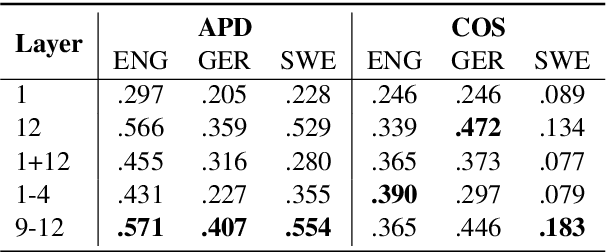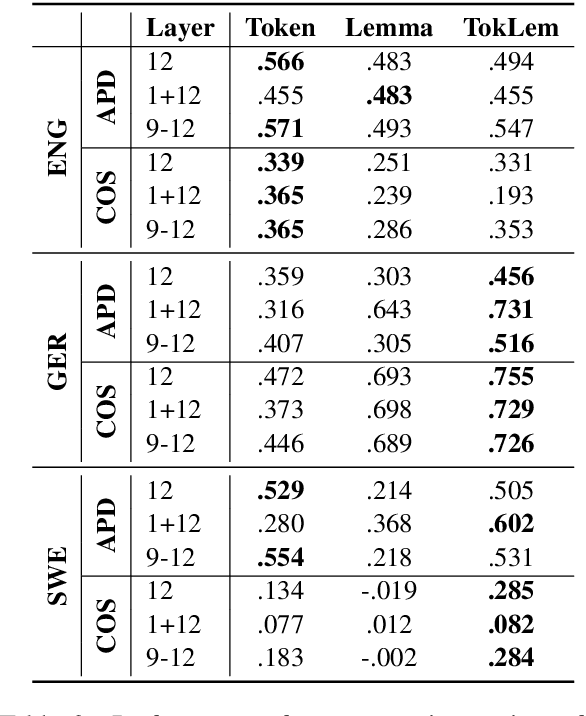Severin Laicher
Explaining and Improving BERT Performance on Lexical Semantic Change Detection
Mar 12, 2021



Abstract:Type- and token-based embedding architectures are still competing in lexical semantic change detection. The recent success of type-based models in SemEval-2020 Task 1 has raised the question why the success of token-based models on a variety of other NLP tasks does not translate to our field. We investigate the influence of a range of variables on clusterings of BERT vectors and show that its low performance is largely due to orthographic information on the target word, which is encoded even in the higher layers of BERT representations. By reducing the influence of orthography we considerably improve BERT's performance.
CL-IMS @ DIACR-Ita: Volente o Nolente: BERT does not outperform SGNS on Semantic Change Detection
Dec 03, 2020
Abstract:We present the results of our participation in the DIACR-Ita shared task on lexical semantic change detection for Italian. We exploit Average Pairwise Distance of token-based BERT embeddings between time points and rank 5 (of 8) in the official ranking with an accuracy of $.72$. While we tune parameters on the English data set of SemEval-2020 Task 1 and reach high performance, this does not translate to the Italian DIACR-Ita data set. Our results show that we do not manage to find robust ways to exploit BERT embeddings in lexical semantic change detection.
 Add to Chrome
Add to Chrome Add to Firefox
Add to Firefox Add to Edge
Add to Edge